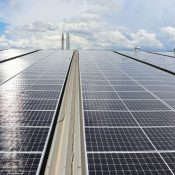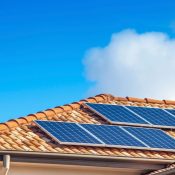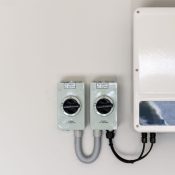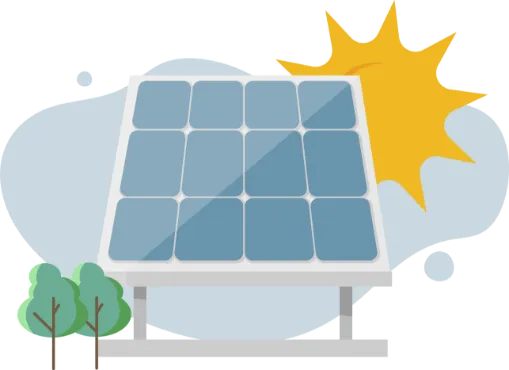What is the Difference Between Solar PV and Solar Thermal?
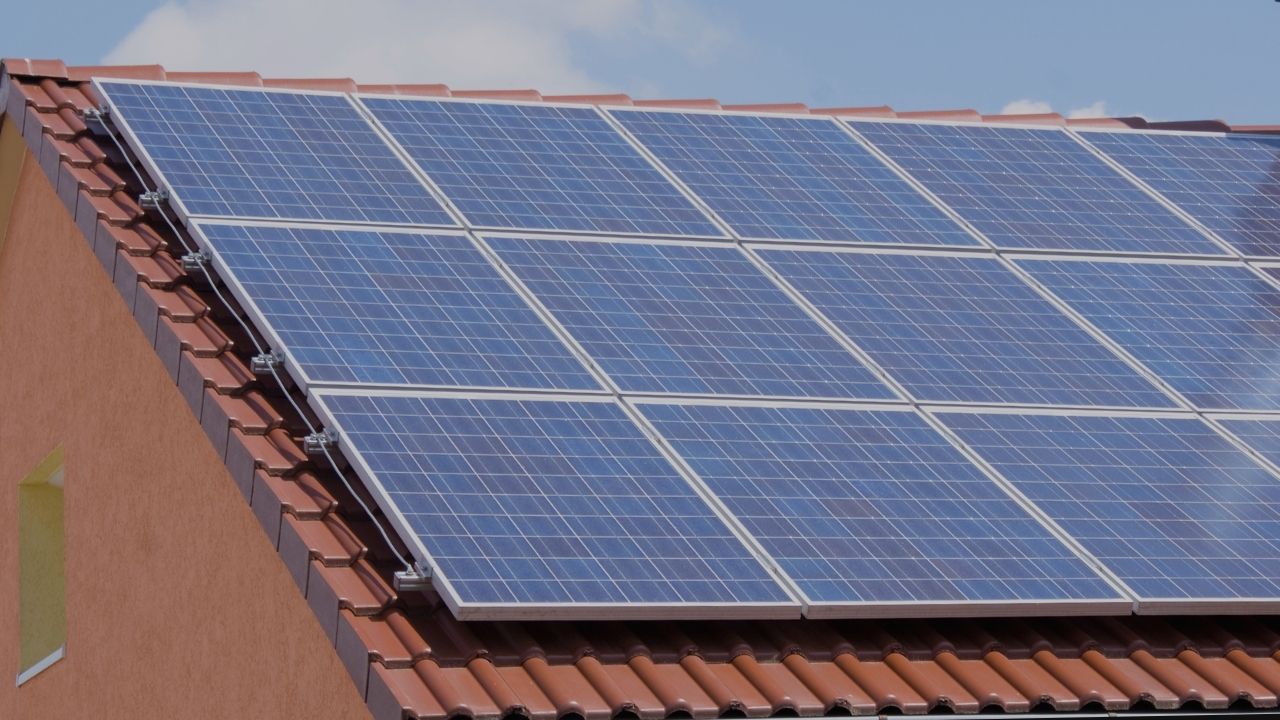
Have you ever wondered how solar energy can be captured in different forms to power our lives? Solar technology comes in two types: solar PV (photovoltaic) systems that convert sunlight directly into electricity and solar thermal systems that use the sun’s energy to heat water or air.
In this blog, we will look into the distinct functions, benefits, and applications of both systems to help you determine which solution could be more advantageous for your energy needs.
Whether you’re looking to reduce utility bills, increase energy independence, or simply make a greener choice, understanding these technologies is crucial for a sustainable future.
What is Solar PV?
Solar PV stands for solar photovoltaic. This technology captures sunlight and turns it directly into electricity. But what does “photovoltaic” really mean? It comes from “photo,” meaning light, and “voltaic,” which refers to electricity produced by a chemical reaction. Solar PV systems use panels made of semiconductor materials that react to light by generating electrical charge.
How do solar PV systems convert sunlight into electricity?
When sunlight hits a solar panel, it causes electrons in the semiconductor material to move, creating an electric current. This current is then used and converted from direct current (DC) to alternating current (AC) through an inverter, making it usable for homes and businesses.
Next, let’s explore how solar thermal systems differ from this technology and how they function.
What is Solar Thermal?
Solar thermal systems are designed to collect and convert sunlight into heat rather than electricity. These systems involve the use of solar collectors, usually panels or tubes, that absorb sunlight and convert it into heat. This heat is then transferred to water, air, or other fluids to be used directly or stored for later use.
How Do solar thermal systems function?
Solar thermal collectors capture the sun’s energy and use it to heat a fluid within the collector. As the fluid heats up, it either circulates through a building to provide heat directly or to a storage system where the heat can be used as needed.
Applications in domestic and industrial settings
The heat generated can be used for various applications, such as warming water for domestic use in homes, supporting heating systems, or even generating power in large-scale industrial applications.
Now, let’s examine the key differences between these two systems and why choosing the right one matters for your energy needs.
How Do Solar PV and Solar Thermal differ?
When considering solar solutions, understanding the differences between solar PV and solar thermal technologies is crucial. Both serve distinct purposes and provide benefits under different circumstances.
Energy outputs of solar PV and solar thermal
Solar PV systems produce electricity, making them versatile for powering anything from small appliances to entire homes. Solar thermal systems, on the other hand, specifically generate heat, which is ideal for heating water or spaces.
Which system is more efficient?
Efficiency is key because it determines how much of the sunlight can be converted into usable energy. Solar PV systems generally have lower efficiency rates compared to solar thermal systems when it comes to converting sunlight into their respective energy types. However, the efficiency of solar PV technology has been improving significantly.
Installation and maintenance costs of each system
Solar PV systems are typically more expensive to install but have lower maintenance costs over time. Solar thermal systems may have lower initial installation costs but can require more maintenance due to their mechanical components.
Climate impact of solar PV versus solar thermal?
Climate plays a significant role in the performance of these systems. Solar PV systems can perform well in a variety of climates, including cooler, less sunny environments. Solar thermal systems are most effective in sunny areas where they can maximise heat production.
Next, let’s look into the applications of both solar PV and solar thermal technologies to better understand where each can be most beneficial.
Where Are Solar PV and Solar Thermal Most Useful?
Choosing the right solar technology depends largely on its intended use and the specific benefits you want to achieve. Both solar PV and solar thermal have optimal applications that maximise their efficiencies and cost-effectiveness.
Typical applications for solar PV systems
Solar PV systems are incredibly versatile and are used to power residential homes, commercial buildings, and even industrial facilities. They can also support public infrastructure, like street lighting and community centers, making them a widespread choice for electrical energy production.
Typical applications for solar thermal systems
Solar thermal systems are often used in residential settings for heating water—this includes everything from showers and baths to swimming pools. They are also utilised in industrial processes where large amounts of heat are required, such as in manufacturing or in the hospitality industry for laundry and heating solutions.
Can solar PV or solar thermal systems benefit your home or business?
Absolutely. If your goal is to reduce electricity bills, a solar PV system is a great choice. For those looking to cut down on heating costs, especially if you use a lot of hot water or need space heating, solar thermal might be the way to go.
What Costs Are Associated with Solar PV and Solar Thermal?
Planning the financial aspects of solar PV and solar thermal systems is crucial for your investment. Both systems have their own set of initial and ongoing costs, as well as different potential savings.
Which Solar Technology Should You Choose?
Selecting the right solar technology isn’t just about cost; it’s about making sure the system fits your specific energy needs and environmental conditions. Each choice comes with its own benefits and considerations.
What factors should you consider before deciding on a solar PV or solar thermal system? Consider your primary energy needs: do you need to reduce electricity bills, or are you more concerned with heating costs? Also, think about your geographical location. Some areas receive more sunlight, making solar PV more beneficial, while others might benefit more from the heat generated by solar thermal systems.
How can a professional assessment help you make the right choice for your situation?
A professional can provide a detailed analysis of your site, considering factors like roof orientation, shading, and local climate, which are crucial for optimising the performance of a solar system. They can also help navigate local regulations and maximise financial incentives, ensuring you get the best return on your investment.
With these insights, you’re better equipped to make a decision that not only meets your energy needs but also aligns with your financial goals.
Conclusion
We explored the fundamental differences between solar PV and solar thermal technologies, highlighting how each converts sunlight into usable energy forms—electricity and heat, respectively.
We discussed their efficiencies, costs, climate suitability, and typical applications, providing you with the knowledge to assess which system aligns best with your energy needs. Whether it’s reducing electricity costs with solar PV or cutting down on heating expenses with solar thermal, understanding these systems is crucial for making a choice.
If you need expert guidance to choose the right technology for your home or business, Going Solar is here to help. Contact us today to learn more about how solar energy can benefit you economically and environmentally.
Planning a switch to solar energy?
Contact Going Solar now and Get Free Advice & Quote Within Minutes!
Frequently Asked Questions
Contact Going Solar Now!
Joe Brennan
Founder @ Going Solar
Joe Brennan, the founder of Going Solar, is dedicated to making solar power mainstream in Ireland and meet SEAI objectives. With a focus on affordability and sustainability, he is bringing renewable energy solutions to homes, reducing costs & environmental impact.
Recent Posts

